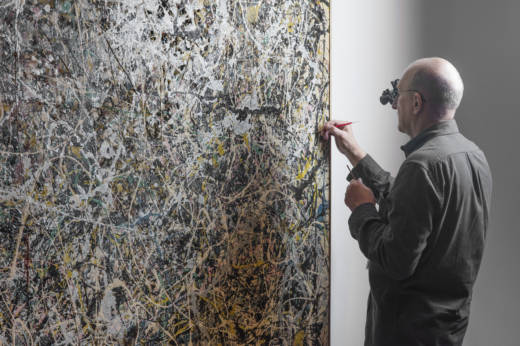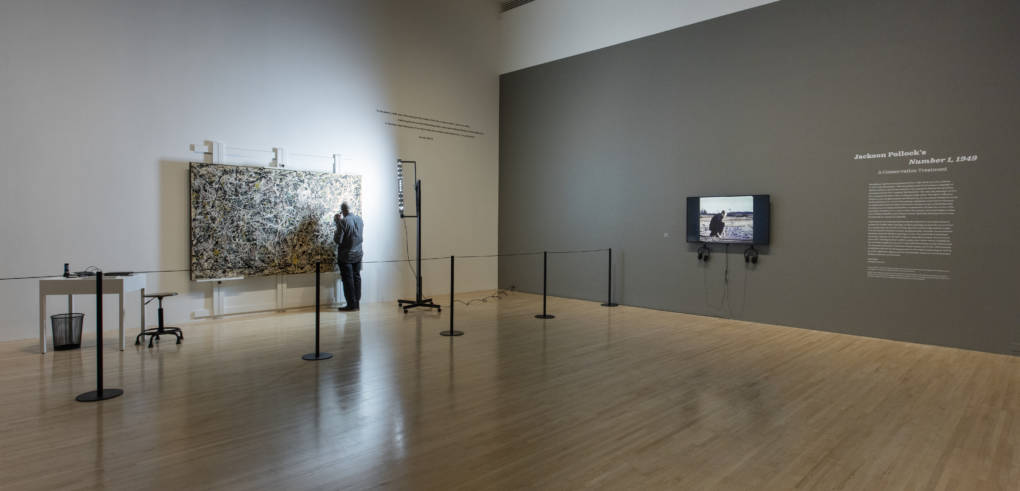Jackson Pollock’s painting Number 1, 1949, is a swirl of multi-colored, spaghettied paint, dripped, flung and slung across a 5-by-8-foot canvas. It’s a textured work — including nails and a bee (we’ll get to that later) — and in the nearly 70 years since its creation, it’s attracted a fair bit of dust, dirt and grime.
That’s where conservator Chris Stavroudis comes in: His job is to clean the painting using swabs, solvents, and tiny brushes. For the last several months, he’s been hard at work, once a week, in full view of the public, in a gallery at The Museum of Contemporary Art, Los Angeles.
Pollock used all sorts of paints — oil paint, house paint, car paint, radiator paint — and they all aged and got dirty in different ways. Working with the Getty Conservation Institute, Stavroudis did tests to see what kind of cleaning was needed.
Stavroudis suspects the bee was unintentional (it probably just flew into the wet canvas as Pollock painted), but the nails weren’t. Pollock added them for texture. Art conservation is as much detective work as aesthetic exercise — and a nail that fell out of the painting gave clues to Pollock’s thinking. In the tiny indentation where a nail had been, Stavroudis saw a hairline of bright orange, under many dribbles of white.


9(MDAxOTAwOTE4MDEyMTkxMDAzNjczZDljZA004))

